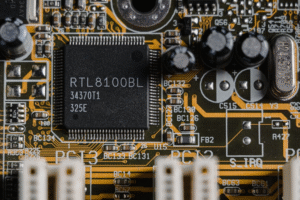The Internet of Things (IOT) has embedded technology into the fabric of everyday existence, ranging from industrial machinery to smart homes. However, increased connectivity widens the attack surface. Hardware vulnerabilities are especially difficult to secure compared to software bugs. Hardware attacks target physical devices, risking permanent backdoors or irreversible damage.
Embedded security represents a shift in design philosophy by incorporating safeguards at the hardware level to establish a robust foundation of trust against both physical and remote threats. Here are three key ways embedded security strengthens IoT devices against hardware-based threats.
1. Implementing Hardware-Based Roots of Trust
A hardware-based root of trust is a secure layer integrated into a microcontroller of a system-on-chip. It executes essential cryptographic tasks and holds sensitive data such as encryption keys. This specialized security module functions autonomously from the main processor. It establishes a secure environment that stays protected even if the primary operating system is breached.
Grounding security in the hardware enables manufacturers to ensure that cryptographic processing takes place in a tamper-proof environment. This hinders attackers from obtaining keys or altering security procedures via software weaknesses.
This method successfully neutralizes whole classes of hardware attacks, including side-channel attacks that seek to extract information from power usage patterns or electromagnetic signals. The root of trust can additionally enforce secure boot procedures that check the integrity of firmware before execution, stopping harmful code from loading at startup.
Developers looking to adopt these solutions need to stay current with the latest electronics components news. It offers key insights into emerging secure elements that strengthen defenses against evolving hardware threats.
2. Safeguarding Against Physical Tampering and Unauthorized Access
Physical security helps block hardware attacks trying to steal data or alter device functionality. These countermeasures include sophisticated techniques such as active mesh shields that can detect probing or interference on circuitry. It also includes memory encryption on the device that renders extracted data unusable without valid cryptographic keys. More advanced versions may include self-destruct modes that delete sensitive information upon detecting tampering.
Manufacturers are also progressively adopting secure enclosed designs that render physical access to components extremely difficult without activating protection systems. These designs could include tamper-proof screws and internal sensors that identify breaches in the enclosure.
Manufacturers establish a robust defense against both remote and direct attacks by integrating physical protections with cryptographic measures. This means that IoT devices remain secure throughout their entire lifespan.
3. Ensuring Secure Manufacturing and Supply Chain Integrity
IoT device security is not only a design issue, but also a function of how it is produced and shipped. Secure provisioning within manufacturing enables each device to receive unique cryptographic identities and keys within a trusted environment, ensuring no duplication or leakage. Secure handling of these materials creates a trust chain from factory to field, blocking counterfeit components and maintaining device integrity throughout its existence.
Security must be ensured across the product lifecycle with ongoing oversight. Secure firmware updates and remote attestation are required to verify device integrity. These measures maintain device authenticity from manufacturing to deployment.
Manufacturers strengthen the entire IoT lifecycle by embedding security into every phase. This approach helps build ecosystems that resist direct attacks and complex threats aimed at today’s supply chains.
Endnote
Embedded security offers a multi-layer solution to protecting IoT devices against ever-evolving hardware attacks. It involves incorporating hardware roots of trust, anti-tampering techniques, and secure supply chain practices. True security goes beyond software, covering everything from silicon to deployment. As IoT grows, embedded protection must keep pace to keep devices safe and dependable.






